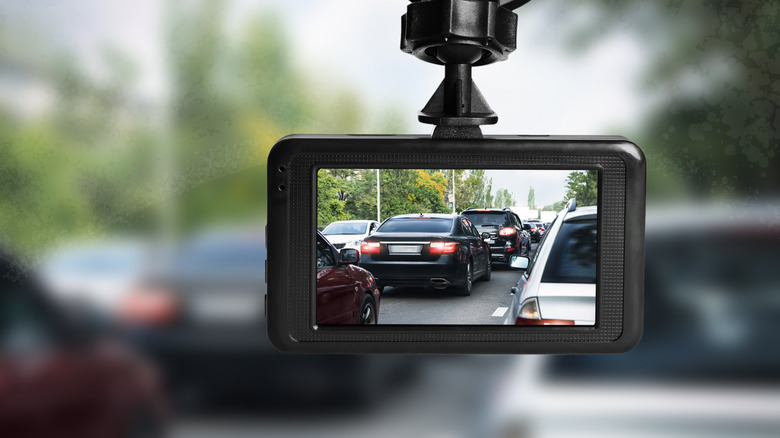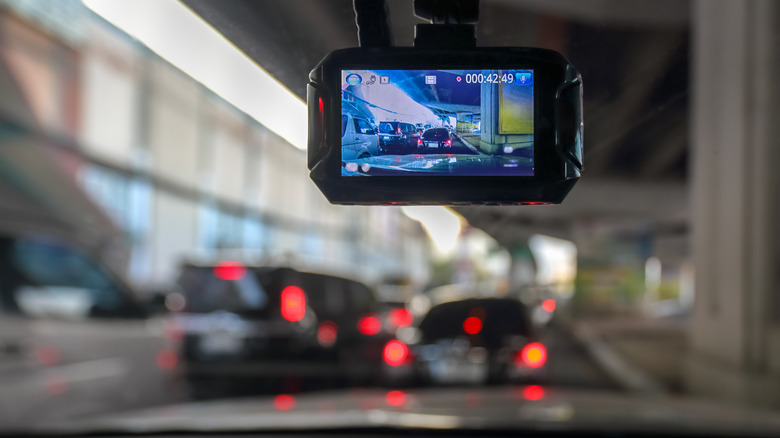Why A More Expensive Dash Cam Is (Usually) A Waste Of Money?
We may receive a commission on purchases made from links.
From our favorite smartphones that take the best photos to the red light cameras perched atop traffic lights, cameras are everywhere. So it really comes as no surprise that many of us have decided it's a good idea to mount one in our cars. Known as dash cams, these devices act as an extra set of eyes, both while you're driving, and after you've parked your car. Many consider purchasing one to serve as a silent and objective witness that can capture footage they can later use to settle insurance claims or protect against liability if they get into an accident. If you've ever shopped for a dash cam, you've almost certainly noticed they come in a variety of shapes and sizes at different price points.
All of these choices can make it hard to know exactly which one to buy. You may wonder if budget-priced models are enough to protect your car, or if you should just splurge on a higher-priced model. While it's true that cheaper dash cams can sometimes fall short of expectations in terms of video quality and reliability, mid-range models, typically priced between $200 and $400, are more than enough for the average driver. Many come with high-resolution video, wide-angle lenses, GPS logging, and parking surveillance, which cover most of the essentials you'll need.
However, once those prices start creeping beyond the $500 mark, the value begins to drop off fast. When you buy an expensive dash cam, you often end up paying for bells and whistles that you won't need in everyday driving situations. For most drivers, spending several hundred dollars on a dash cam is basically paying for features that look good on paper but won't make much of a difference when it comes to actual driving or recording incidents.
Most drivers don't need an ultra-premium dash cam
There's no doubt that more expensive dash cams usually come with more features, at least that's almost always the case. If you're willing to shell out between $300 and $500 for one, you'll find they often include features like ultra-high-resolution 4K video, cloud uploads, and driver alerts. The question is, do you really need those things, and will they help keep you safe on the road? If so, it's probably worth getting a mid-range priced dash cam. Once you get above that price range, things start to change, and you start to see diminishing returns. For example, the mid-range Vantrue N4 Pro Dash Cam costs $379.99 on Amazon, putting it right in the sweet spot for performance and price.
What you may not realize is that whether you buy a budget-priced or premium model, there's a good chance they use the same SoC (System on Chip) and CMOS (Complementary Metal-Oxide-Semiconductor) image sensors, such as a Novatek chipset paired with a Sony CMOS image sensor. That means that image quality doesn't vary a great deal from one dash cam to the next because they've all got the same core components. Features are the big differentiator between mid-range and very expensive dash cams.
The extra money you spend may get your software enhancements, additional features, and brand prestige, but the video quality won't change in any substantial way. That's why, if you're a driver who's looking for a dash cam that'll provide you with clear video evidence in case of an accident or parking lot incident, a budget-priced or mid-range dashboard camera on Amazon will almost always be more than enough. For many people, that means a dash cam like the Redtiger Dash Cam, which retails for $199.99 on Amazon, is all they need.

